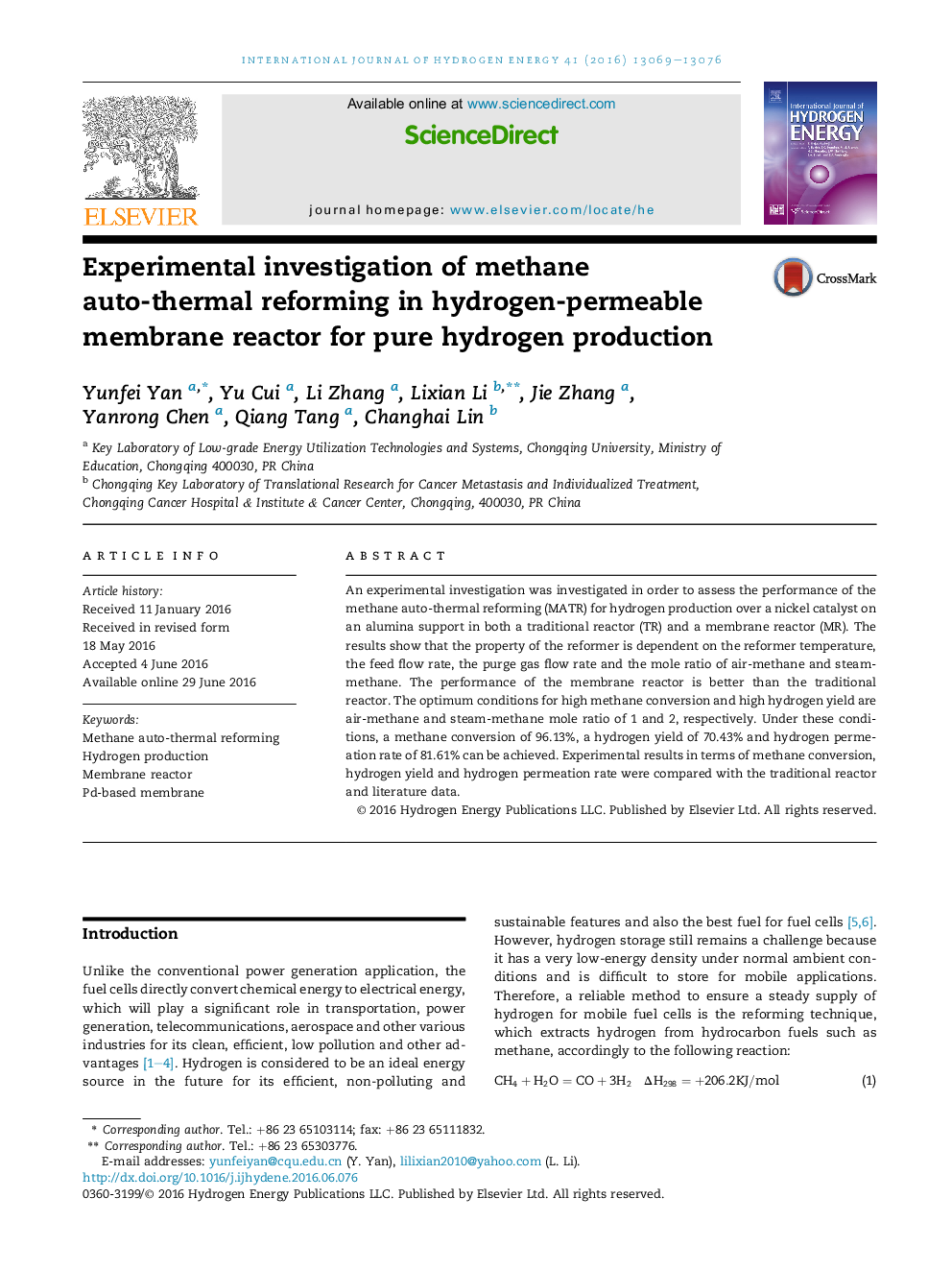| Article ID | Journal | Published Year | Pages | File Type |
|---|---|---|---|---|
| 1268220 | International Journal of Hydrogen Energy | 2016 | 8 Pages |
•MATR for hydrogen production in traditional and membrane reactor are investigated experimentally.•The highest conversion is obtained at medium temperature in membrane reactor.•High methane conversion and hydrogen yield appear at the α = 1 and the β = 2.•The H2/CO mole ratio can be regulated by changing the steam/methane molar ratio.
An experimental investigation was investigated in order to assess the performance of the methane auto-thermal reforming (MATR) for hydrogen production over a nickel catalyst on an alumina support in both a traditional reactor (TR) and a membrane reactor (MR). The results show that the property of the reformer is dependent on the reformer temperature, the feed flow rate, the purge gas flow rate and the mole ratio of air-methane and steam-methane. The performance of the membrane reactor is better than the traditional reactor. The optimum conditions for high methane conversion and high hydrogen yield are air-methane and steam-methane mole ratio of 1 and 2, respectively. Under these conditions, a methane conversion of 96.13%, a hydrogen yield of 70.43% and hydrogen permeation rate of 81.61% can be achieved. Experimental results in terms of methane conversion, hydrogen yield and hydrogen permeation rate were compared with the traditional reactor and literature data.
